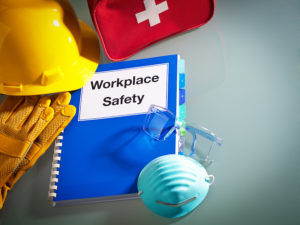
The 6 main types of safety hazards include: chemical, biological, ergonomic, safety conditions, physical, and physiological.
Workplace accidents can cause severe harm or worse to employees or visitors. As a result, your business could face a fine, a damaged reputation, or in the worst-case scenario, imprisonment. It’s crucial to report safety hazards in the workplace to reduce risk. Being an excellent facility manager means having an efficient system for employees or visitors to report workplace safety hazards. Here are some helpful tips to consider.
You Should Encourage Your Employees to Report Safety Hazards
Employees should feel comfortable speaking up when it comes to reporting identified hazards. This process is much smoother when you have a responsive reporting system that employees can adopt with ease. Here are some deterrents that might cause an employee to hesitate or delay reporting a hazard:
- An employee who doesn’t have a lot of maturity or discipline
- Pressure to finish the job quickly
- Judgment from peers, supervisors, or management
- Lack of or no feedback from reported incidents
- The employee doesn’t feel as if the hazard affects them or it’s their responsibility
Therefore, you should adopt a workplace culture where employees support each other, provide quick feedback and resolutions, and supply the necessary training for employee safety awareness.
6 Main Types of Safety Hazards
- Chemical: a hazardous substance that causes harm or illness
- Biological: exposure to viruses, bacteria, mold, dust, and sewage
- Ergonomic: physical factors that could cause musculoskeletal damage (e.g., your office chairs not being highly uncomfortable or there being no anti-fatigue mats in your warehouse)
- Safety Conditions: hazards that might cause unsafe work conditions such as falls or electrocutions
- Physical: environmental factors such as height, noise, and radiation
- Physiological: physical or emotional harassment that negatively impacts an employee’s wellbeing
The Breakdown of Reporting Hazards
Risk assessment involves:
- Assessing if you have the proper machinery, PPE, and tools necessary to get the job done
- Identifying any physical, chemical, biological, and mental health hazards that could cause harm
- Identifying if the hazard is a low, medium, or high-risk safety issue
- Controlling, maintaining, and eliminating the hazard ensuring that your employees have the proper training and execution tactics
- Proceeding after there is no longer a risk, and the worksite is safe.
Any problems need proper documentation that must go to a supervisor or the safety department. This report should include the condition of work equipment, tools, and machinery and substance issues or environmental impacts.
Contact Facility Site Contractors today to ensure that your business operations run smoothly.
Let Facility Site Contractors Keep Your Business in Top Shape
Our management team is made up of experienced experts with knowledge of all aspects of construction and facilities. Facility Site Contractors has the capabilities to meet all of our clients’ critical infrastructure needs CONUS and OCONUS. We are committed to practicing sustainable principles to achieve the integrated benefits of environmental, social, and economic sustainability. Since its founding in 1990, we have been employing sustainable practices in daily operations to reduce our resource burden on the environment and to ensure we have a positive impact on our clients.
